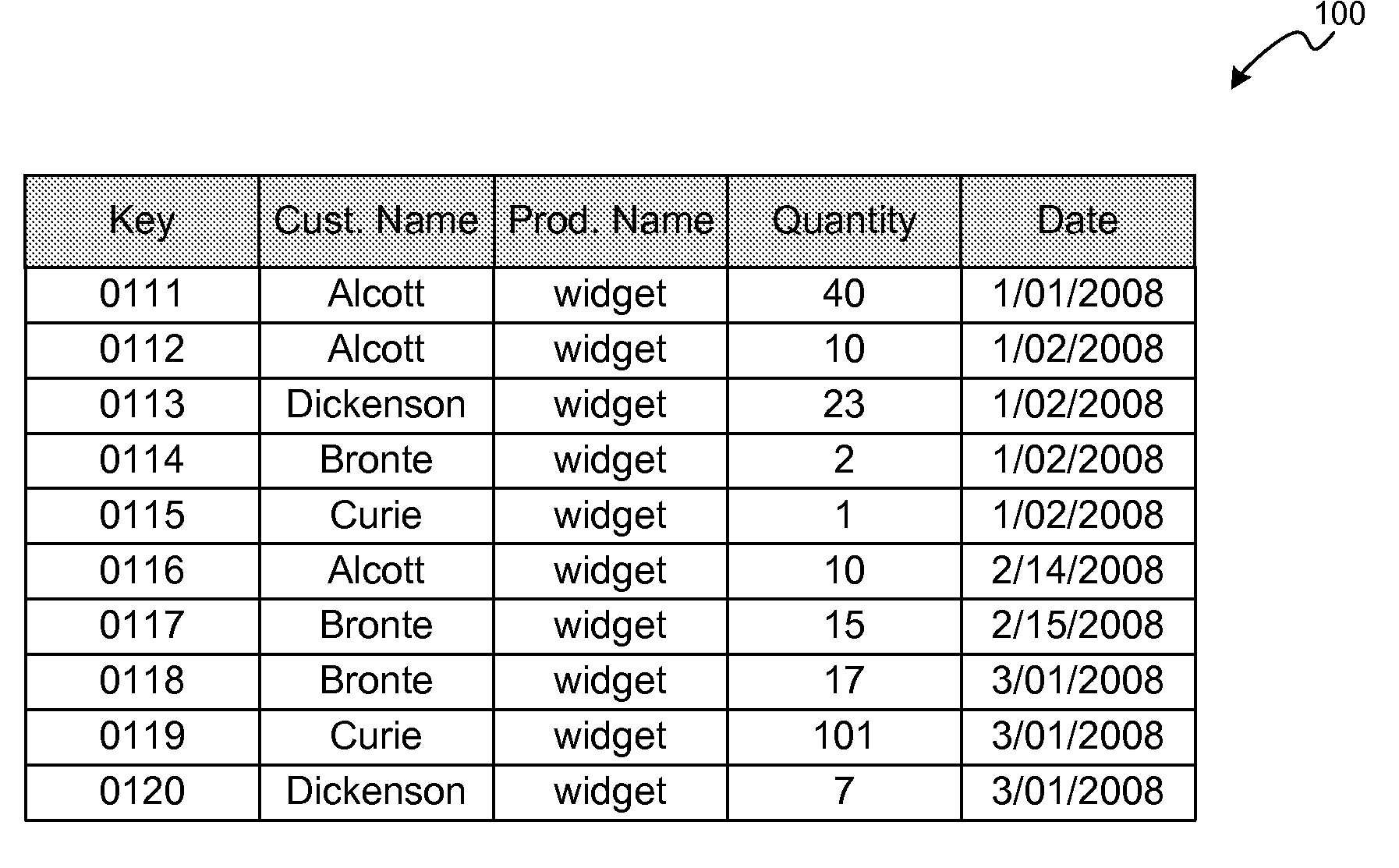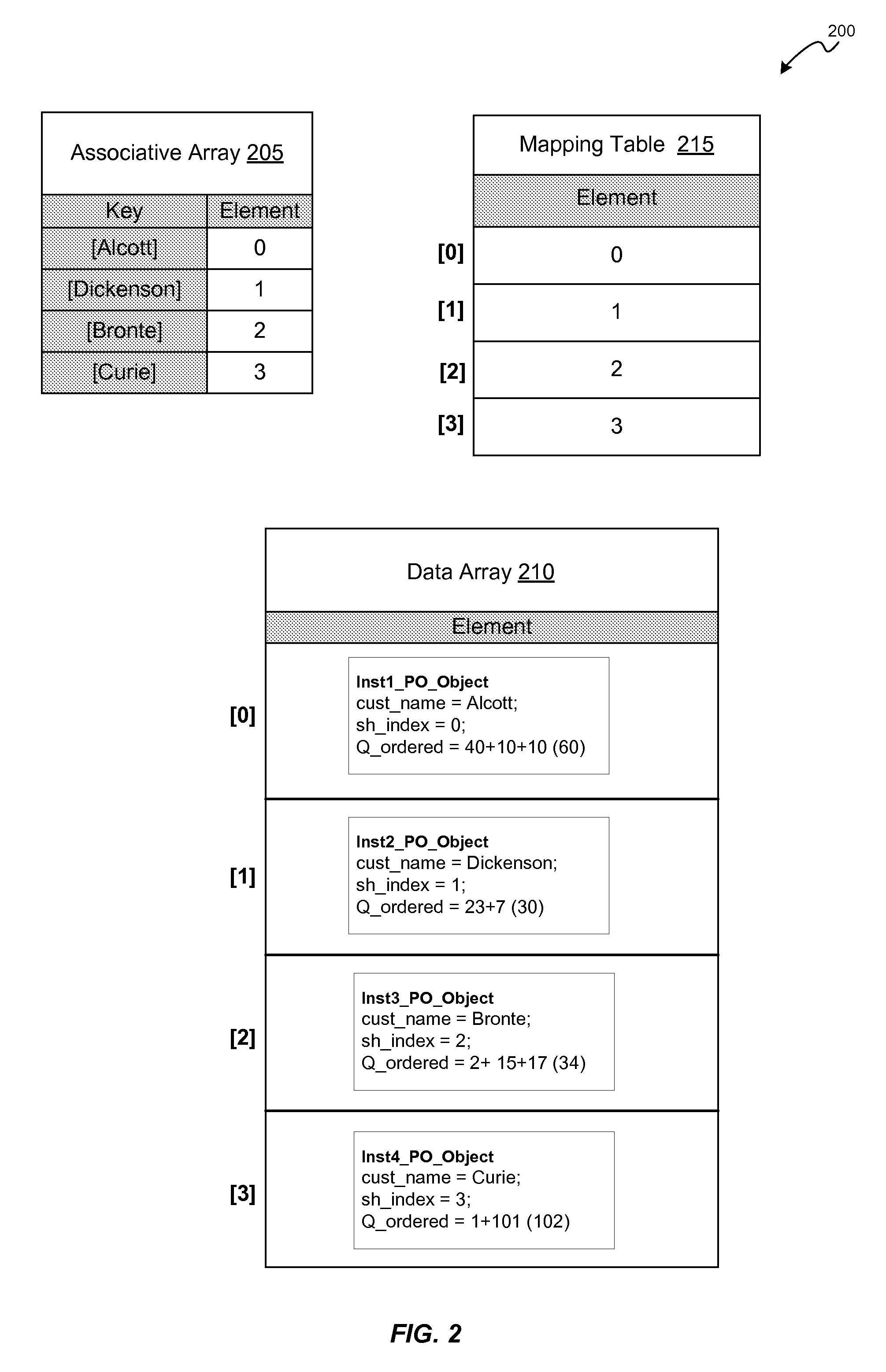Sortable hash table
a hash table and sorting technology, applied in the field of data access, can solve the problems of difficult the inability to convert data to information readily understood, and the inability to reorder or sort the entries of the hash table, etc., to achieve the effect of simplifying and/or transparen
- Summary
- Abstract
- Description
- Claims
- Application Information
AI Technical Summary
Benefits of technology
Problems solved by technology
Method used
Image
Examples
Embodiment Construction
[0024]The systems and methods described herein provide for sortable hashing using elements such as a hash table or associative array, a data array, and mapping table. For each row in the associative array in one embodiment, the mapping table maps an original offset (i.e., offset into the data array prior to sorting) to a modified offset (i.e., offset into the data array after sorting, splicing, adding, removing, etc.). This exemplary system allows for fast symbolic access by symbolic property name and supports sorting such that data elements can be accessed in numeric order. Thus, data in the data array can be sorted and it is possible to iterate through the data array in sorted order. The hash table application enables both numeric and symbolic property access to data.
[0025]In the description that follows, embodiments will be described in reference to subsystems on a platform for a software application, such as a database application. However, embodiments are not limited to any par...
PUM
 Login to View More
Login to View More Abstract
Description
Claims
Application Information
 Login to View More
Login to View More - R&D
- Intellectual Property
- Life Sciences
- Materials
- Tech Scout
- Unparalleled Data Quality
- Higher Quality Content
- 60% Fewer Hallucinations
Browse by: Latest US Patents, China's latest patents, Technical Efficacy Thesaurus, Application Domain, Technology Topic, Popular Technical Reports.
© 2025 PatSnap. All rights reserved.Legal|Privacy policy|Modern Slavery Act Transparency Statement|Sitemap|About US| Contact US: help@patsnap.com



